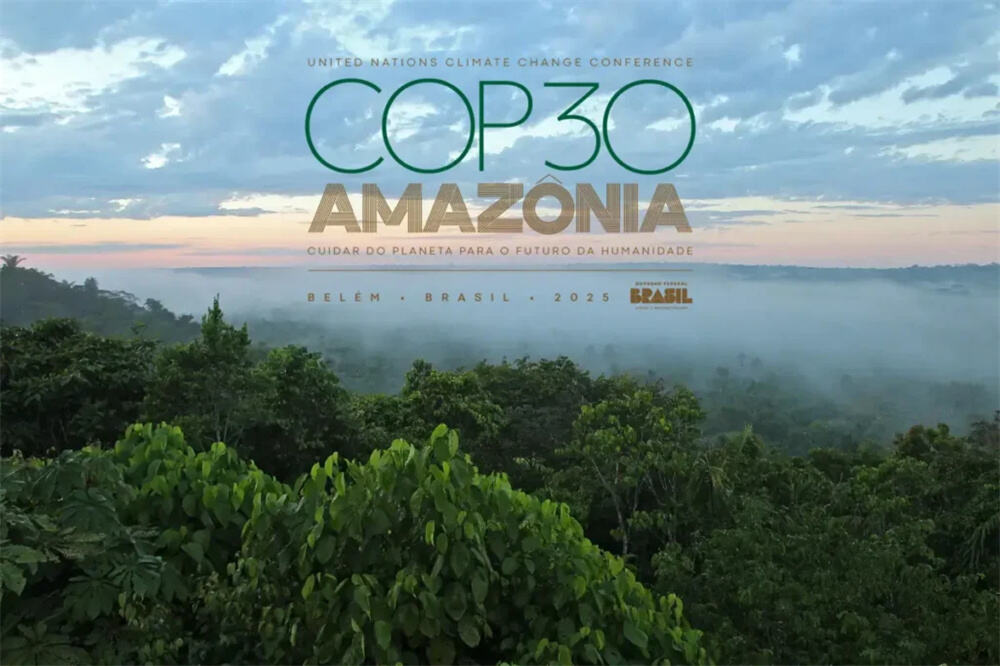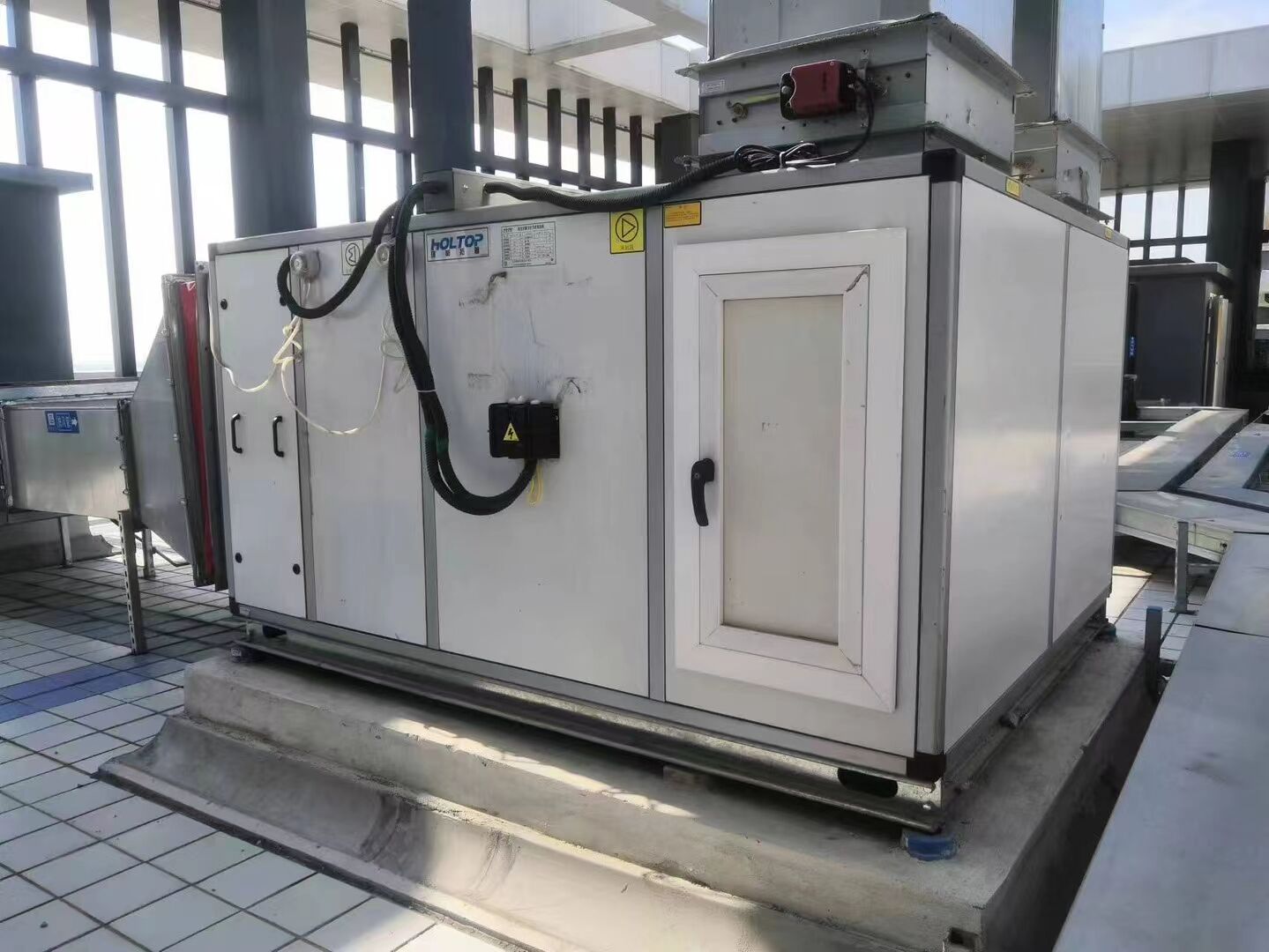With the world on a roughly 2.8°C warming trajectory, COP30 calls for a decisive decade of implementation. Our fresh air Ventilation System brings climate action into everyday indoor spaces.
Date: 2025-11-18 Location: China
Tags:
- ● COP30
- ● Net-zero emissions
- ● Nationally Determined Contributions (NDCs)
- ● Indoor air quality
- ● Fresh air ventilation system
- ● Green & low-carbon

Article Summary
At COP30 in Belém, Brazil, the United Nations and national governments are engaged in critical negotiations on how to keep global warming within 1.5°C. Current Nationally Determined Contributions (NDCs) point toward a 2.5–2.8°C warming trajectory, which is forcing all sectors to accelerate the transition to net-zero emissions and a more resilient economy. As a green technology company, we are turning grand climate goals into tangible reductions in emissions and concrete health benefits inside homes and buildings through our energy-efficient, intelligently controlled fresh air ventilation system, contributing real-world action to this “implementation-focused” COP.
COP30 in Context
In November, representatives from nearly 200 countries, together with scientists and private sector leaders, gathered in Belém, the gateway city to the Amazon rainforest in Brazil, for the 30th Conference of the Parties to the United Nations Framework Convention on Climate Change (COP30). This conference, often described as an “implementation-focused COP”, has a clear goal:
- ● Turn the 1.5°C target into real-world action
- ● Focus on the decisive decade of the 2020s
- ● Move beyond slogans to measurable implementation and delivery
Under the Paris Agreement’s “ratchet mechanism”, countries must regularly strengthen their NDCs and continuously tighten their emissions pathways. However, multiple assessments show that:
- ● Even if all current pledges are fully delivered, the world is still heading for a warming of roughly 2.5–2.8°C.
- ● This is significantly above the relatively safer 1.5°C threshold identified by the scientific community.
- ● We remain some distance away from avoiding more intense heatwaves, floods and sea-level rise.

Three Main Priorities of COP30
- ● More ambitious NDCs: Encouraging countries to submit new NDCs that are more consistent with the 1.5°C goal.
- ● Scaled-up climate finance: Delivering at least USD 1.3 trillion per year in climate finance, especially for mitigation and adaptation in developing countries.
- ● Just transition: Phasing out fossil fuels while safeguarding jobs and social equity, making climate action truly people-centered.
From Global Warming Targets to Everyday Buildings and Air
The transition to net-zero emissions is not only about macro-level shifts in energy systems. It also penetrates:
- ● Every building
- ● Every community
- ● Every single room
This includes the “invisible air” we often overlook. Buildings and their operations account for nearly 40% of global CO₂ emissions, a significant portion of which comes from heating, cooling and ventilation systems. If we can, at the same time:
- ● Reduce energy consumption through higher-efficiency fresh air systems
- ● Improve indoor air quality with smarter control
then we can quietly shave off that extra fraction of a degree in our everyday homes and workplaces, turning climate targets into daily, visible change.
With this in mind, we translate the global agenda of COP30 into specific, on-the-ground products—our next-generation green fresh air ventilation system. From the very beginning, our product design has pursued a dual goal of “net-zero + health”:
- ● Net-zero side: using high-efficiency DC inverter motors and Heat Recovery technology to significantly cut energy use during ventilation and reduce the system’s carbon footprint, while still maintaining sufficient fresh air volume.
- ● Health side: using multiple sensors to monitor indoor CO₂, PM2.5 and volatile organic compounds (VOCs) in real time and dynamically adjust the air supply to keep indoor air within a comfortable, healthy range.
Ventilation on Demand
In real-world applications, our fresh air ventilation system can adjust airflow based on both the number of occupants and indoor air quality:
- ● In meeting rooms, busy classrooms or open-plan offices, when CO₂ or PM2.5 levels rise, the system automatically increases the ventilation rate to quickly “flush” polluted indoor air.
- ● When occupancy drops or at night, it lowers its operating power to avoid unnecessary energy consumption.
This “ventilation on demand” logic not only meets energy-saving and emission-reduction requirements, but also enhances the overall user experience.

A People-Centered Net-Zero and Resilient Transition
It is important to emphasize that the shift to net-zero emissions and a resilient economy is increasingly recognized as a truly people-centered transformation. It is not only about large-scale energy and industrial projects, but also about the breathing experience of ordinary people:
- ● At home
- ● In offices
- ● In schools
- ● In hospitals
Through a lower-carbon, smarter and healthier indoor air solution, our fresh air ventilation system offers a concrete and tangible entry point into this human- and planet-centered transition:
- ● Every time it switches on, and
- ● Every air exchange it performs
is both a commitment to personal health and a small contribution to the global 1.5°C goal. 
Looking Beyond COP30: From 2.8°C Toward 1.5°C
Looking beyond COP30 into the next decade, diplomatic language will ultimately give way to engineering projects, technological innovation and consumer choices. Whether it is national NDCs or corporate net-zero roadmaps, all of these ambitions will have to be implemented through the transformation of countless:
- ● Energy systems
- ● Industrial processes
- ● Building spaces
We believe that green, intelligent equipment represented by our fresh air ventilation system will play an increasingly important role in the global effort to move from 2.8°C toward 1.5°C. From Belém to cities around the world, from the conference halls to every room, climate action is becoming something we can:
- ● See
- ● Touch
- ● And inhale as clean, fresh air

Our Next-Generation Green Fresh Air Ventilation System
- ● Make every breath lower-carbon and healthier
- ● Bring the 1.5°C goal into everyday life
- ● Cool the planet, starting from a single room
Key Features
- ● High energy efficiency: Equipped with DC inverter motors and high-efficiency heat recovery modules, the system delivers sufficient fresh air while reducing power consumption, helping users cut both electricity usage and carbon emissions.
- ● Intelligent air regulation: Built-in multi-sensor array monitors key indicators such as CO₂, PM2.5 and VOCs in real time and automatically adjusts airflow and ventilation modes based on indoor air quality.
- ● Health and comfort: Optimized airflow design and multi-stage filtration effectively remove particulate matter and harmful gases, lowering indoor air pollution risks and improving breathing comfort.
- ● Data visibility: Companion mobile and large-screen dashboards visualize indoor air quality, operational energy use and estimated emissions reductions, providing quantitative support for corporate ESG disclosure and green lifestyles at home.
- ● System integration: The system can be integrated with Building Automation Systems (BAS) and smart home platforms to achieve coordinated control of lighting, air conditioning and ventilation, unlocking greater potential for whole-building carbon reductions.
Alignment with COP30
- ● In the context of an implementation-focused COP, translating national and city-level climate targets into actionable measures at the building and household level.
- ● Reducing building operational energy use and providing technological support for more ambitious NDCs.
- ● From a people-centered perspective, turning net-zero and resilient transition into healthier air environments for workers, students, patients and families.

Q&A
1. What is COP30?
COP30 is the 30th Conference of the Parties to the United Nations Framework Convention on Climate Change (UNFCCC). It is hosted in Belém, a city in northern Brazil, from 10–21 November 2025. Governments, scientists, businesses and civil society representatives gather there to:
- ● Assess progress under the Paris Agreement
- ● Discuss how to strengthen Nationally Determined Contributions (NDCs)
- ● Decide on the finance and technology cooperation needed to keep global warming within 1.5°C
2. Why is COP30 so important?
COP30 is crucial for several reasons:
- ● Critical timing: The current round of NDCs will shape global emissions between 2030 and 2035, the decisive window for keeping the 1.5°C “lifeline” within reach.
- ● Ambition gap: Existing pledges currently point toward warming of around 2.5–2.8°C, which is far from sufficient.
- ● Implementation focus: COP30 needs to deliver more than high-level statements; it must produce concrete implementation plans for:
- ● Stronger emissions cuts
- ● A faster transition away from fossil fuels
- ● Scaled-up finance for loss and damage
- ● Just transition: The world looks to COP30 to advance a truly just transition, balancing:
- ● Protection of the Amazon rainforest
- ● Support for developing countries
- ● Livelihoods of ordinary workers
For companies, COP30 is also a key moment to review their own net-zero pathways and showcase green technology innovations.
3. Can global warming be kept within 1.5°C?
From a scientific standpoint, keeping global warming strictly within 1.5°C is now extremely challenging, as the remaining carbon budget is being rapidly depleted. Based on current policies, warming this century is more likely to approach 2.5–2.8°C. However:
- ● Several authoritative assessments indicate that if countries drastically accelerate emissions reductions before 2030,
- ● And cut global emissions by around 60% by 2035,
- ● There is still a chance of bringing warming back down toward around 1.5°C in the second half of the century.
In this sense, 1.5°C should be seen less as a simple pass/fail threshold and more as a safety line we must strive to stay as close to as possible.
This also means that every sector—energy, industry, buildings and consumption—must take more ambitious action. From large-scale renewable energy deployment to energy-efficient products like our fresh air ventilation system, all of these efforts play indispensable roles on this difficult but necessary 1.5°C pathway.







 Hot News
Hot News